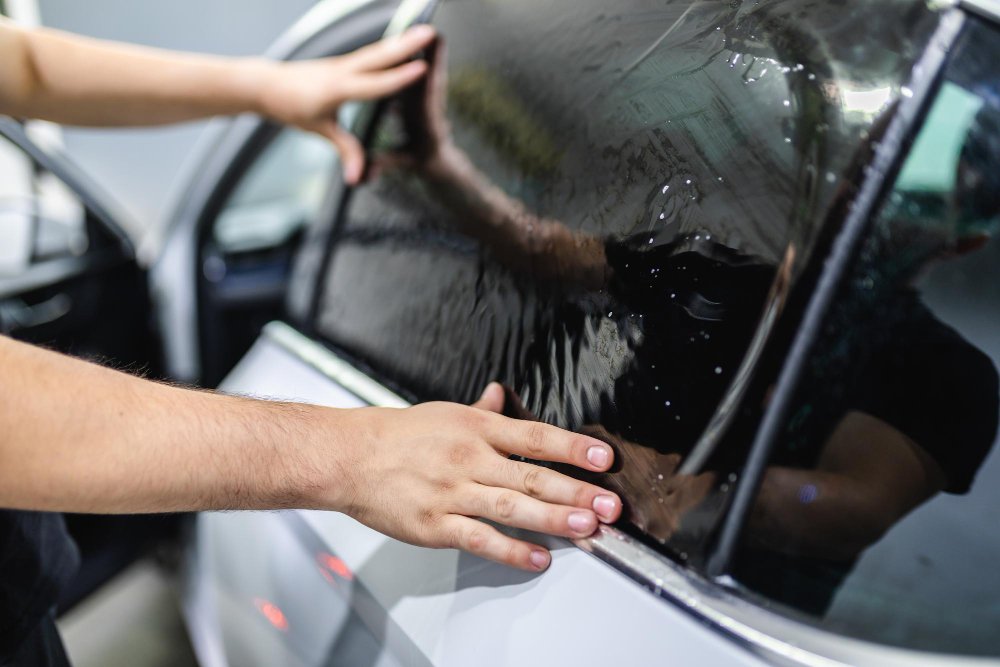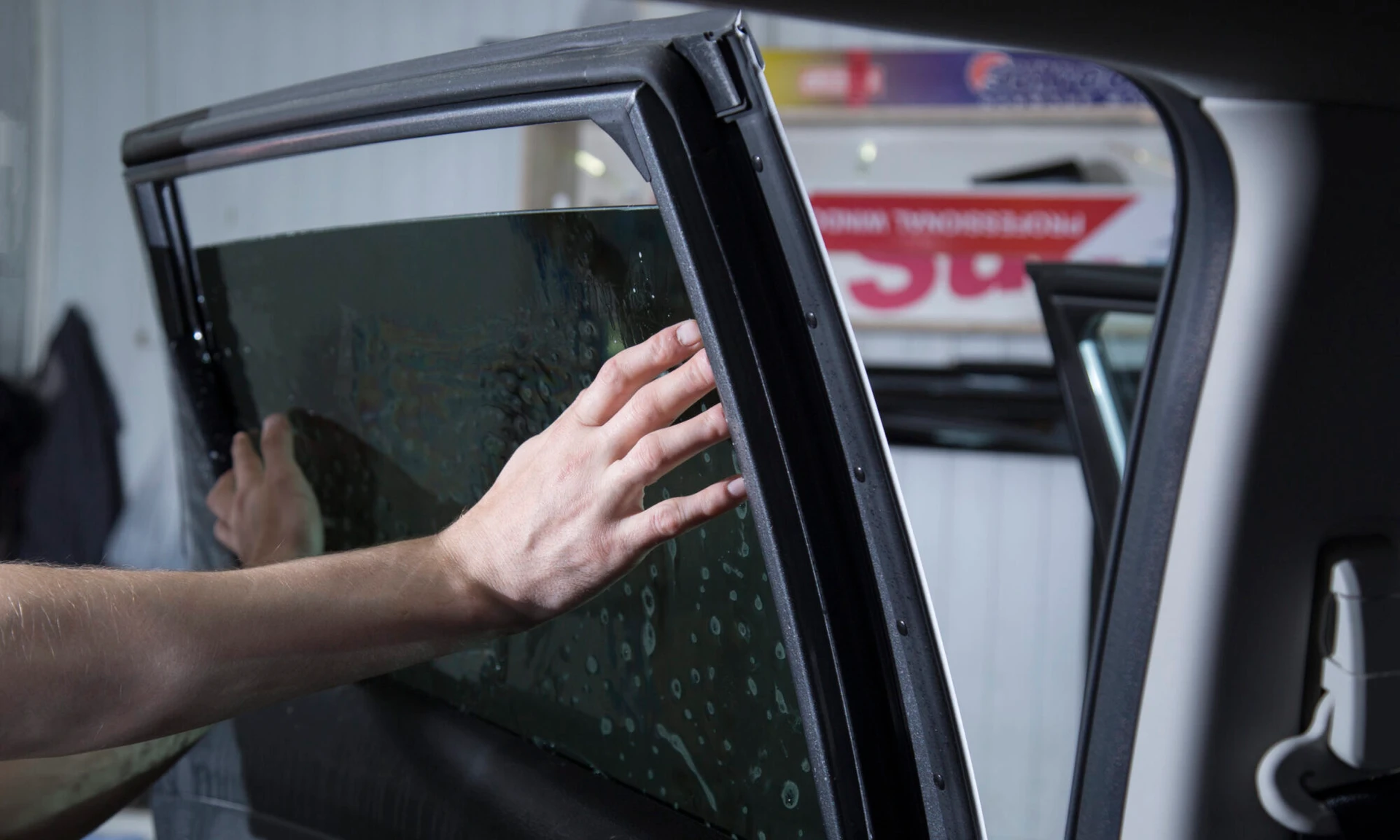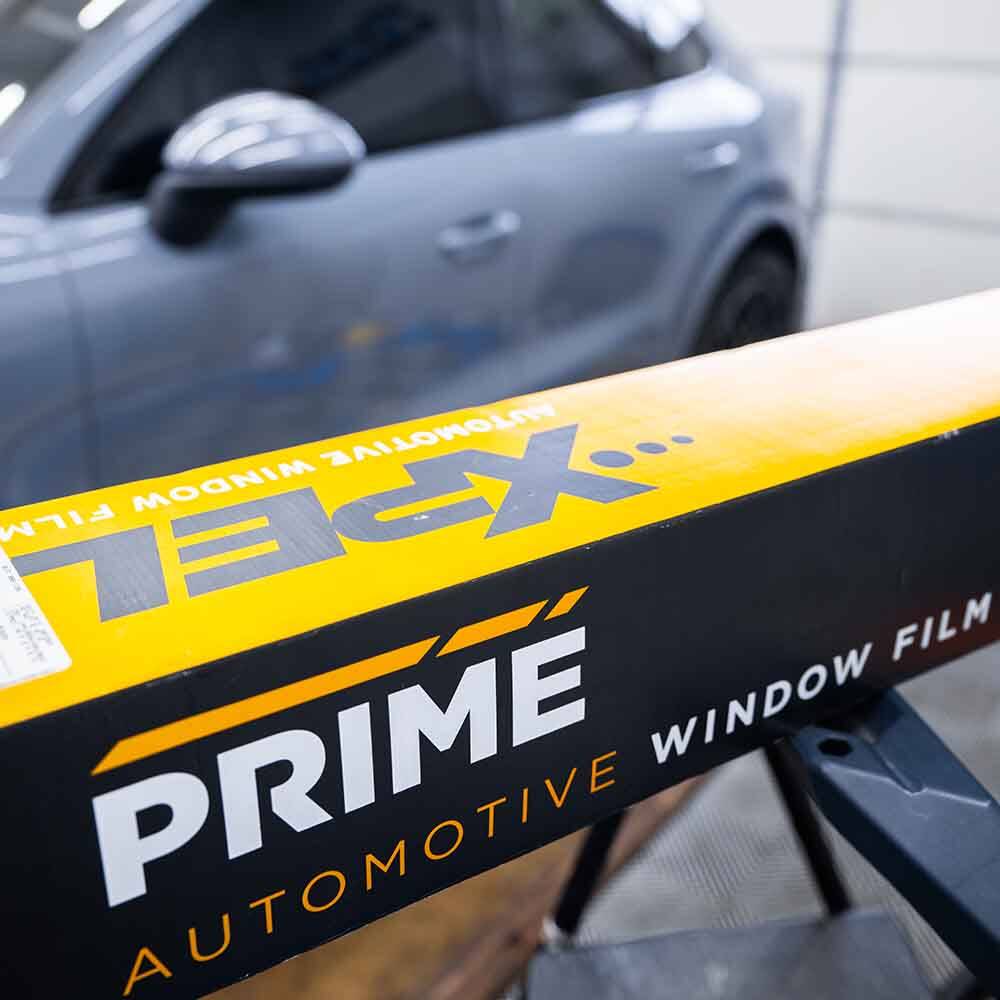A Comprehensive Overview to Provider Supplied With Window Tint Solutions
Home window tinting has become a crucial solution for both business and household settings. It uses various movies created to meet particular demands, such as warm reduction and privacy improvement. Comprehending the variety of alternatives readily available is crucial for making informed decisions. This guide will explore the different types of window tinting films, their advantages, and the installation procedure. It will also address legal factors to consider that might affect your options. What elements should one think about prior to continuing?
Types of Home Window Tinting Films
Window tinting movies can be found in various types, each created to satisfy details needs and choices. One of the most typical types include colored, metalized, ceramic, and crossbreed movies. Colored films offer a fundamental level of personal privacy and warmth reduction, using a color layer to soak up warm. Metalized films integrate little metal particles, supplying boosted warmth being rejected and glow reduction while likewise including resilience. Ceramic films attract attention for their superior efficiency, as they obstruct warm without hindering signal transmission, making them excellent for electronic tools. Finally, crossbreed films combine aspects of both dyed and metalized movies, offering a balance between aesthetic charm and practical advantages. Each movie type differs pertaining to light transmission, UV protection, and guarantee choices, permitting customers to pick an option that aligns with their particular requirements and style choices. Understanding these choices is essential for making a notified choice when considering home window tinting services.
Advantages of Residential Home Window Tinting
Residential home window tinting deals a series of benefits that boost both comfort and power performance in homes. Among the main benefits is the reduction of warm gain, which leads to decrease power costs by lessening the dependence on a/c systems. Furthermore, home window tinting assists to obstruct hazardous UV rays, securing both residents and furnishings from sunlight damage and fading.Moreover, it boosts privacy without jeopardizing all-natural light, permitting property owners to appreciate their views while maintaining prying eyes at bay. The application of window movie also enhances safety and security by holding shattered glass in location throughout accidents or storms, therefore lowering injury risks.Furthermore, residential home window tinting can add to an extra visually pleasing outside, as various film alternatives are available to match various building designs. Overall, these benefits make home window tinting a useful and beneficial financial investment for home owners looking for enhanced livability and power efficiency.
Advantages of Industrial Window Tinting
While numerous organizations look for means to boost their work environment, business window tinting provides a multitude of advantages that can substantially boost both staff member convenience and functional efficiency. One primary benefit is the decrease of glare, which can greatly enhance efficiency by enabling workers to function without diversions from severe sunlight. Furthermore, home window tinting can assist manage interior temperature levels, bring about lowered reliance on air conditioning and lower power costs.Furthermore, colored windows use UV protection, securing workers and furnishings from hazardous rays that can trigger skin damage and discolor products. This defense not just adds to a healthier workplace yet additionally lengthens the life of workplace interiors. Eventually, commercial home window tinting can boost personal privacy, permitting organizations to preserve an expert appearance while reducing outside distractions. In general, these benefits make industrial window tinting a valuable financial investment for services aiming to maximize their office.
The Home Window Color Installment Process
An effective window color setup procedure involves a number of key steps to guarantee excellent results. The area and windows should be thoroughly cleansed to get rid of dirt, grease, and any various other pollutants that might affect adhesion. Next, the tint film is meticulously gauged and cut to fit the certain dimensions of each window.Following this, the installer applies an option to the glass surface area to permit repositioning of the film before it adheres. The movie is after that put onto the home window, making certain it is devoid of bubbles and creases. When located appropriately, a squeegee is used to eliminate excess water and air.Finally, the sides of the movie are cut for a neat coating, and the installment is inspected for quality. Appropriate interest to these steps assures the longevity and effectiveness of the window color, enhancing both appearances and functionality.
Upkeep and Treatment for Your Home Window Color
Exactly how can one guarantee the longevity and look of home window tint? Appropriate maintenance and treatment are essential. It is recommended to wait at the very least 30 days after setup before cleansing the color to enable for appropriate adhesion. Once this period is over, utilizing a soft fabric or microfiber towel can protect against scrapes while cleansing. Mild, ammonia-free cleaners should be utilized to prevent damaging pop over to this site the film.Regular examinations of the edges and surface area can aid recognize any type of bubbling or peeling early, permitting prompt repair services. Prevent using abrasive products or severe chemicals that could degrade the tint. In addition, parking in shaded areas or making use of sunshades can lessen UV exposure, more protecting the color's integrity.
Lawful Considerations for Home Window Tinting
Legal factors to consider for window tinting differ significantly across different states. Each state has certain laws relating to noticeable light transmission limitations, which dictate just how much light can travel through tinted home windows. Furthermore, some states offer clinical exceptions, permitting individuals with particular conditions to use darker colors than usually allowed.
Tinting Regulations by State
While window tinting can improve a lorry's appearances and give extra personal privacy, it is essential for automobile owners to understand the varying guidelines that control tinting across different states. Each state has its own details laws concerning the allowable degrees of color darkness, representation, and the kinds of windows that can be tinted. Some states enable darker tints on rear home windows yet enforce more stringent limitations on front side windows. Furthermore, specific states may require particular labels or certifications to validate conformity. Stopping working to stick to these guidelines can cause penalties or the necessity to eliminate the tint (Davinci of Michigan Window Tinting). Automobile proprietors need to investigate their state's regulations prior to investing in window tinting services.
Noticeable Light Transmission Purviews
Recognizing the noticeable light transmission (VLT) restrictions is important for any individual thinking about home window tinting. VLT describes the portion of noticeable light that can go through the colored glass. Various states have varying laws concerning acceptable VLT levels, particularly for various home windows in automobiles. As an example, front windscreens typically have actually stricter limits compared to side and back windows. Violating these laws can result in fines and the demand to remove non-compliant tinting. As an outcome, it is crucial for individuals to research their state's specific VLT regulations prior to waging home window tint installation. Compliance guarantees not just legal adherence yet likewise security and exposure while driving, advertising a more secure environment for all road customers.
Medical Exceptions for Tinting

Choosing the Right Home Window Tinting Solution
Picking the right home window tinting solution involves a cautious analysis of individual tinting requirements. It is important to evaluate numerous solution alternatives, guaranteeing they straighten with the wanted outcomes. Additionally, comprehending the lawful regulations controling window tinting can assist avoid prospective concerns down the line.
Evaluating Tinting Demands

Reviewing Service Options

Comprehending Legal Laws
Before selecting a window tinting solution, people have to recognize the legal guidelines governing tinting in their location, as these regulations can vary significantly between districts and states. Each territory might enforce specific restrictions on the allowable color darkness, reflective residential properties, and which windows can be tinted. For instance, some states might permit darker colors on back windows while restricting them on front home windows. Furthermore, policies frequently describe the kinds of products that can be utilized and might require details labeling or qualification. Failure to follow these legislations can result in penalties or the need to get rid of the tint. Potential clients ought to validate the validity of their wanted color and seek advice from professionals acquainted with regional legislations to guarantee conformity.
Often Asked Concerns
For How Long Does Home Window Tinting Normally Last?
The durability of window tinting usually varies from five to 10 years, relying on factors such as the quality of the movie, installment process, and environmental conditions. Regular maintenance can also influence its life expectancy considerably.
Can Home Window Tinting Be Eliminated Conveniently?
The simplicity of window tint elimination depends on the setup technique and glue made use of. Generally, professional solutions guarantee safer, cleaner removal, while DIY attempts might lead to damage to the glass or sticky deposit.
Will Home Window Tinting Influence My Home's Resale Worth?
Window tinting can affect a home's resale worth positively or negatively. Potential customers may appreciate energy cost savings and personal privacy, while others might watch it as an individual choice, affecting overall charm and value of the residential or commercial property.
Exist Eco-Friendly Home Window Tinting Options Available?
The inquiry about eco-friendly window tinting alternatives reveals that numerous makers currently use products using sustainable materials. These choices can lower energy usage and boost convenience while straightening with eco conscious practices in home improvement.
Can Home Window Tinting Assist With Energy Performance?
Window tinting can substantially improve energy efficiency by decreasing warmth gain and loss. more helpful hints This helps keep comfy interior temperature levels, possibly lowering heating & cooling costs, while additionally adding to a more lasting atmosphere via decreased energy intake. The application of window movie also boosts safety by holding shattered glass in area throughout tornados or accidents, therefore reducing injury risks.Furthermore, domestic home window tinting can add to a more cosmetically pleasing exterior, as different film alternatives are readily available to match different building designs. Additionally, home window tinting can help manage interior temperatures, leading to decreased reliance on air conditioning and lower power costs.Furthermore, tinted home windows offer UV protection, protecting employees and home furnishings from harmful rays that can create skin damage and discolor materials. Some states enable darker colors on rear home windows yet impose more stringent limits on front side windows. Before selecting a home window tinting solution, individuals must recognize the legal guidelines governing tinting in their location, as these laws can vary substantially between states and districts. Some states might allow darker tints on back windows while restricting them on front home windows.